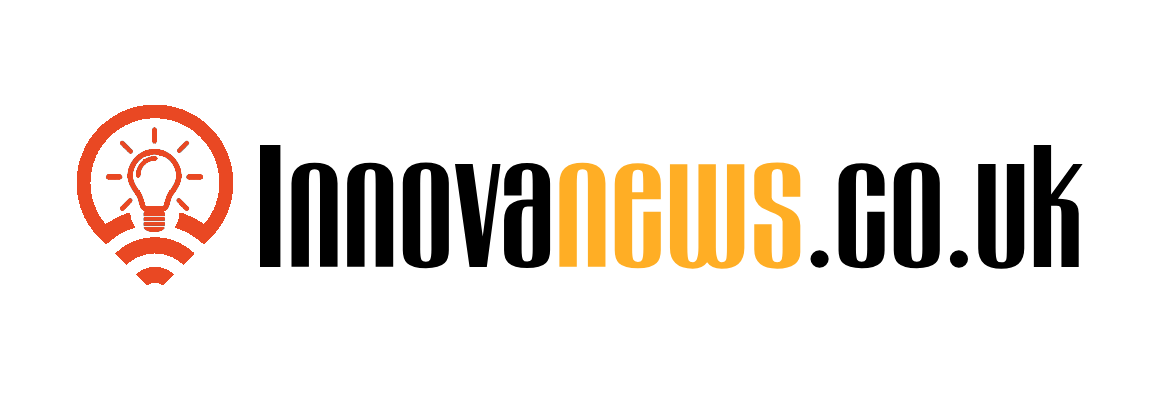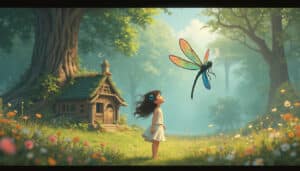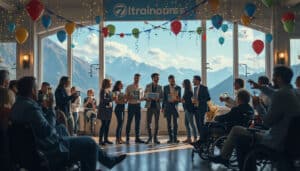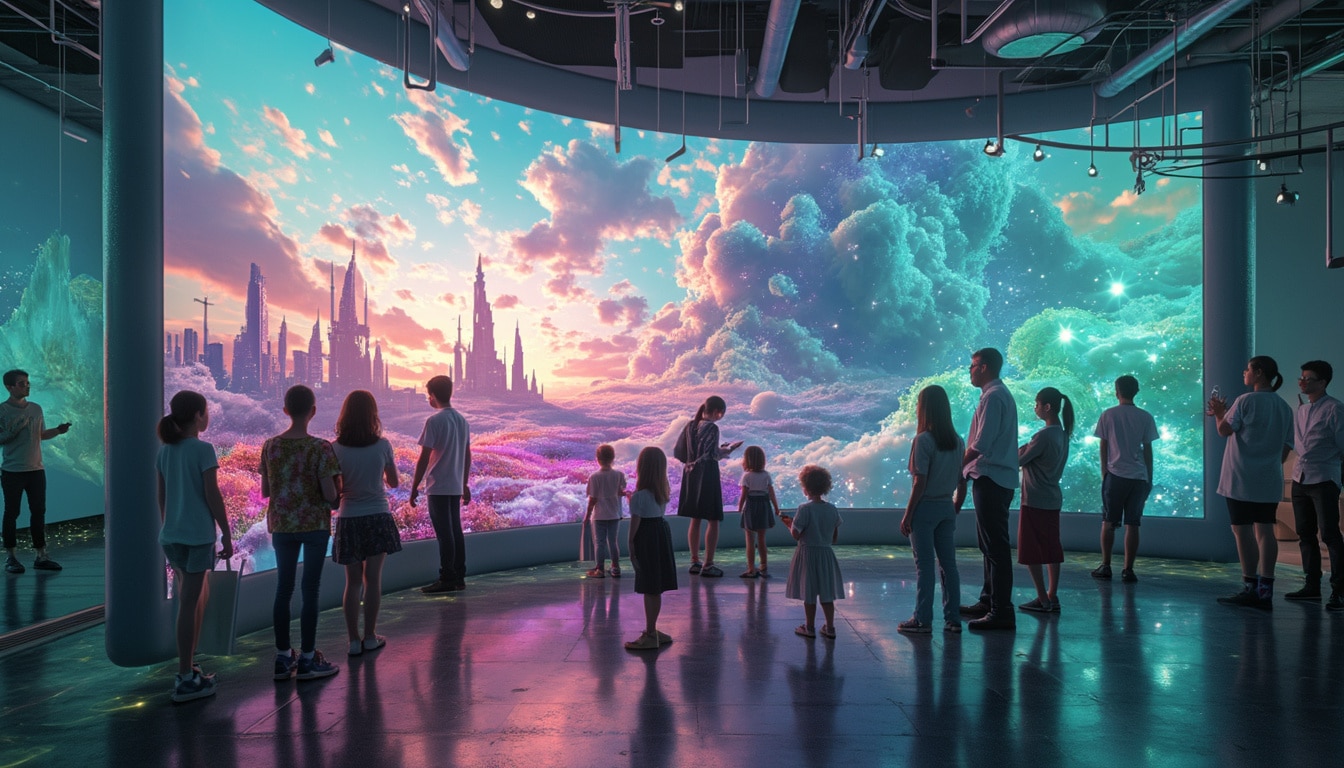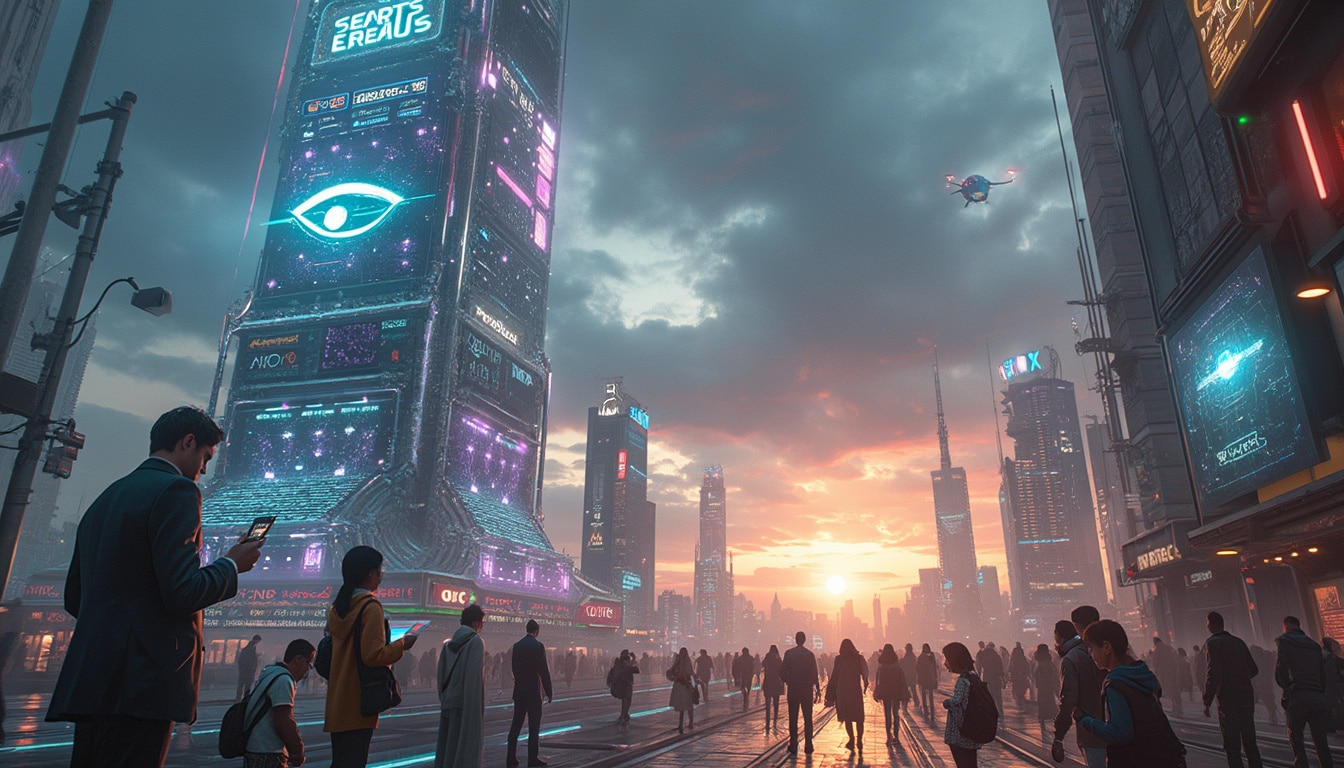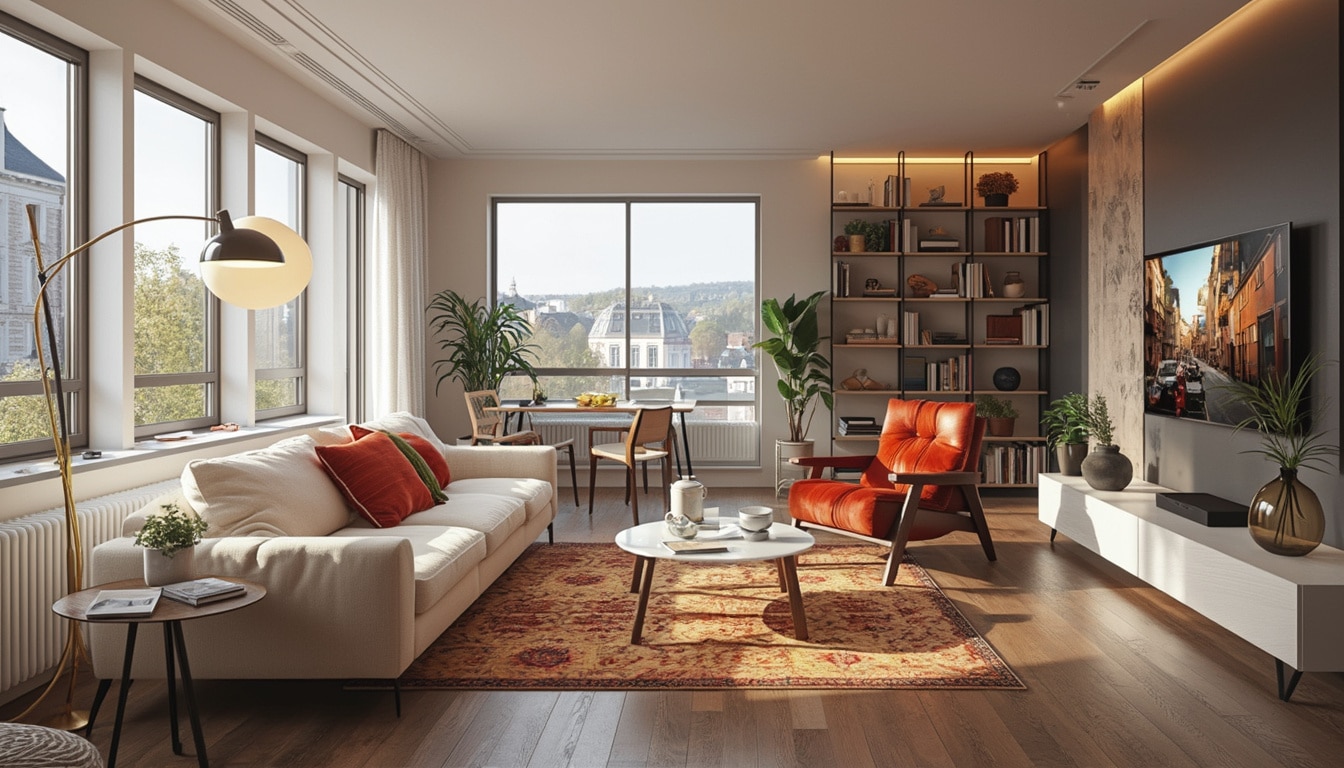Ever felt like your favorite image generator is more of a lukewarm latte than a robust espresso? Well, buckle up, because OpenAI is stirring the pot! Say goodbye to DALL-E’s dim performance and hello to the shiny new « 4o Image Generation ».
OpenAI has rolled out its latest brainchild, 4o Image Generation, setting the stage for a vibrant shift in how we create visuals within ChatGPT. Gone are the days when DALL-E was the go-to tool, as the spotlight now firmly shines on this innovative newcomer. Leveraging the sheer might of GPT-4o, this feature promises to revolutionize image creation by tapping directly into advanced natural language understanding. Imagine typing a simple idea and watching as a vivid, precise image springs to life without the need for convoluted prompts. Users are raving about the enhanced visual quality, especially when it comes to embedding text within images—a notorious weak spot for DALL-E 3. Whether you’re crafting eye-catching posters, sleek logos, or even intricate comic strips, 4o Image Generation delivers with flair.
But that’s not all. The new system isn’t just about creating images from scratch; it also offers robust image editing capabilities. Upload a photo and request modifications like adding objects, tweaking the background, or altering specific details with ease. With the ability to source context from up to 15 images, the possibilities for creativity are virtually endless.
However, success comes with its hiccups. The overwhelming demand for this feature has put OpenAI’s servers through the wringer, leading to a temporary cap on image generations. CEO Sam Altman humorously noted that their GPUs were « melting under the pressure, » highlighting just how popular the tool has become. As a result, each user is now limited to generating three images per day. While this might curb spontaneous bursts of creativity, it ensures the infrastructure remains stable and that everyone gets a fair shot at using the service.
Despite the temporary restrictions, OpenAI is hustling behind the scenes to ramp up efficiency and lift the rate limits as soon as possible. In the meantime, users are encouraged to prioritize their creations, whether they’re experimenting with multiple illustration styles or fine-tuning various design elements. The community’s feedback has been overwhelmingly positive, sparking lively discussions about the future of image generation within conversational AI platforms.
So, have you had a chance to dive into ChatGPT’s latest image generation feature? Share your adventures and mishaps in the comments below!
Share the article:
Welcome to the dazzling world of AI image generation, where algorithms paint pictures faster than you can say « pixel perfect. » Recently, OpenAI has taken center stage with its latest innovation, 4o Image Generation, seamlessly integrated into ChatGPT. But the plot thickens as competitors like Midjourney and Google’s Imagen aren’t stepping aside without a fight. Let’s dive into this high-stakes creative showdown!
Table of contents
ToggleWhat is OpenAI’s 4o Image Generation and why does it matter?
OpenAI has rolled out its latest gem, 4o Image Generation, built on the robust GPT-4o model. This new tool is more than just an upgrade; it’s a game-changer in the realm of AI-driven visuals. By leveraging the deep understanding of natural language that GPT-4o offers, users can now describe their ideas in plain English (or any preferred language) and receive high-quality, accurate images in return. No more wrestling with complex prompts or deciphering cryptic commands—just straightforward descriptions turning into stunning visuals.
Unlike its predecessor, DALL-E, which sometimes struggled with integrating text into images or maintaining consistency in artistic styles, 4o Image Generation shines where it matters. The ability to create posters, logos, captions, and even comic strips with ease has significantly broadened its appeal. Moreover, the new feature allows users to edit existing images by adding objects, changing backgrounds, or modifying details, with support for up to 15 input images to enrich the context.
This leap forward not only enhances user experience but also positions ChatGPT as a more versatile tool in the toolkit of creators, marketers, and businesses alike. For instance, if you’re intrigued by how a new Google ad challenges iPhone 16s innovation claims, imagine how seamlessly 4o Image Generation can help visualize such competitive dynamics.
How does 4o Image Generation compare to competitors like Midjourney and Imagen?
While Midjourney and Google’s Imagen have been formidable players in the AI image generation space, 4o Image Generation brings unique strengths to the table. Midjourney, known for its distinctive artistic style, often attracts users looking for a specific aesthetic that leans towards surreal and abstract. On the other hand, Google’s Imagen emphasizes photorealism and detailed image synthesis, making it a favorite for applications requiring lifelike visuals.
In contrast, OpenAI’s 4o Image Generation strikes a balance between creative freedom and precision. Its integration within ChatGPT offers a seamless workflow for users already engaged in text-based tasks, eliminating the need to switch platforms or learn new interfaces. Furthermore, the intuitive nature of 4o Image Generation—where complex prompts are no longer a barrier—levels the playing field, making high-quality image generation accessible to a broader audience.
However, the competition isn’t resting. For example, Midjourney’s recent move to enable local AI generation on PCs aims to reduce dependency on cloud-based services, promising faster and more private image creation. Similarly, Google’s continuous enhancements to Imagen, including tools to identify AI-generated images, indicate a push towards greater transparency and reliability in AI visuals.
What makes GPT-4o-powered image generation superior?
The secret sauce behind GPT-4o-powered 4o Image Generation lies in its sophisticated language understanding. By directly harnessing the capabilities of GPT-4o, the image generator can interpret nuanced descriptions with remarkable accuracy. This means that users can express their ideas more naturally, without needing to master the art of prompt engineering.
For instance, instead of crafting a detailed and rigid prompt to generate a specific scene, you can simply describe what you envision, and 4o Image Generation translates that into a visually coherent image. This approach not only enhances usability but also improves the quality of output, particularly in areas where previous tools like DALL-E 3 fell short, such as embedding readable text within images.
The practicality of this advancement is evident in diverse applications—whether you’re designing a marketing poster, crafting a logo, or creating a storyboard for a comic, 4o Image Generation offers the flexibility and precision required. Additionally, the ability to edit images by incorporating up to 15 input images ensures that the generated visuals are contextually rich and tailored to specific needs.
For those interested in the broader implications of AI advancements, check out how a French startup is revolutionizing battery technology with groundbreaking innovation, showcasing the transformative potential of AI across various industries.
What are the current limitations and how is OpenAI addressing them?
With great power comes great responsibility—and sometimes, great challenges. The overwhelming popularity of 4o Image Generation has led to server overloads, causing temporary limitations on image generation. OpenAI has had to implement a cap, allowing each user to generate three images per day until they can scale their infrastructure to handle the demand.
In a humorous twist, Sam Altman, the CEO of OpenAI, admitted that their GPUs were « melting » under the pressure. While this lighthearted comment highlights the intensity of user interest, it also underscores the technical hurdles that come with rapid adoption of innovative technologies.
These temporary rate limits mean that creatives who wish to explore multiple illustration styles or experiment with various image variations will need to prioritize their requests or wait until the next day to continue. While this might be a slight inconvenience, it’s a necessary measure to ensure a stable and reliable user experience as OpenAI works diligently to expand their server capacity.
Meanwhile, users are eager to share their experiences and provide feedback, contributing to the iterative improvement of the tool. OpenAI’s commitment to lifting these limits quickly demonstrates their dedication to meeting user needs without compromising on quality.
How are users reacting to 4o Image Generation and what does the future hold?
The reception to 4o Image Generation has been overwhelmingly positive. Early adopters praise its ease of use, the quality of the generated images, and the seamless integration with ChatGPT. The ability to create detailed and accurate visuals without the steep learning curve has democratized access to high-quality image generation.
However, with popularity comes competition. As mentioned earlier, services like Midjourney and Google’s Imagen are continually evolving, pushing the boundaries of what’s possible with AI-driven visuals. Additionally, innovations from other sectors, such as free AI video generators, are expanding the creative toolkit available to users.
Looking ahead, the future of AI image generation seems bright and bustling with innovation. OpenAI’s rapid enhancements and commitment to user satisfaction bode well for 4o Image Generation’s place in the market. Concurrently, the competitive landscape will likely spur further advancements, leading to even more sophisticated and accessible tools for creators.
In this vibrant ecosystem, the emphasis will likely remain on improving usability, quality of output, and integration capabilities. As AI continues to evolve, so too will the ways in which we interact with and utilize these powerful tools to bring our creative visions to life.
Can AI image generation tools be integrated into existing creative workflows?
Absolutely! One of the standout features of 4o Image Generation is its seamless integration with ChatGPT, allowing users to incorporate image creation directly into their existing workflows. Whether you’re a journalist like me, a marketer, a graphic designer, or a hobbyist, the ability to generate and edit images within a trusted platform enhances productivity and creativity.
For example, a content creator can draft an article and simultaneously generate relevant images without switching between multiple applications. This integration streamlines the creative process, saving time and maintaining consistency across different mediums. Additionally, the editing capabilities—such as adding objects or modifying backgrounds—allow for quick adjustments, making it easier to iterate and refine visual content on the fly.
Furthermore, the API-friendly nature of these tools ensures that they can be embedded into various applications and services. This means that businesses can customize the image generation process to fit their specific needs, whether that’s automating the creation of marketing materials, enhancing customer engagement with personalized visuals, or even developing interactive educational content.
For those interested in how AI tools are shaping different industries, consider exploring how Google’s new tool to identify AI-generated images is impacting content verification and authenticity.
What are the ethical considerations surrounding AI image generation?
With the advent of powerful AI image generation tools like 4o Image Generation, ethical considerations have come to the forefront. The ability to create highly realistic images raises questions about authenticity, potential misuse, and the overall impact on creative industries.
One major concern is the creation of deepfakes—realistic but fake images that can be used maliciously to spread misinformation or damage reputations. To combat this, companies like OpenAI and Google are developing tools to identify AI-generated images, ensuring transparency and accountability in digital content creation.
Another ethical aspect is the potential displacement of traditional artists and designers. While AI can augment creativity, it’s crucial to strike a balance where these tools act as enhancers rather than replacements. Encouraging responsible use and fostering collaboration between humans and AI can help mitigate these concerns.
Moreover, the use of AI in generating images brings up important discussions about intellectual property and copyright. Determining the ownership of AI-generated content and ensuring that original creators are credited and compensated appropriately is an ongoing challenge that the industry must address.
By prioritizing ethical guidelines and implementing robust safeguards, the benefits of AI image generation can be maximized while minimizing potential risks. As the technology continues to evolve, ongoing dialogue and regulation will be essential in navigating these complex issues.
How can businesses leverage AI image generation for growth?
Businesses across various sectors are discovering innovative ways to harness the power of AI image generation to drive growth and enhance their operations. From marketing and advertising to product development and customer engagement, the applications are vast and diverse.
In marketing, AI-generated images can significantly reduce costs and time associated with traditional design processes. Companies can quickly create custom visuals tailored to specific campaigns, allowing for more dynamic and responsive marketing strategies. This agility enables businesses to stay ahead of trends and respond to market demands more effectively.
For product development, AI tools like 4o Image Generation facilitate rapid prototyping and visualization. Designers can experiment with different concepts and iterate on designs without the need for extensive manual work. This accelerates the innovation cycle, enabling businesses to bring new products to market faster.
Customer engagement is another area where AI image generation shines. Personalized visuals can enhance user experience, making interactions more engaging and meaningful. For instance, e-commerce platforms can offer customized product images based on user preferences, boosting conversion rates and customer satisfaction.
Additionally, AI-generated images can play a crucial role in training and education. Companies can create detailed and accurate visual aids that enhance learning and information retention. This is particularly valuable in industries where visual communication is key, such as healthcare, engineering, and technology.
For more insights on how AI is transforming other areas, take a look at these free AI video generators that are revolutionizing the creative process.
What does the future hold for AI image generation?
The future of AI image generation is brimming with possibilities. As technology continues to advance, we can expect even more sophisticated and versatile tools that push the boundaries of creativity and functionality.
One significant trend is the integration of AI with other emerging technologies. For example, the combination of AI image generation with virtual reality (VR) and augmented reality (AR) is set to create immersive experiences that were previously unimaginable. Imagine designing a virtual store with AI-generated visuals or enhancing real-world environments with dynamic, interactive graphics.
Another area ripe for innovation is real-time image generation, where AI can create and modify visuals on the fly during live events or interactive sessions. This could revolutionize fields like gaming, live streaming, and interactive storytelling, offering users unprecedented levels of customization and engagement.
Moreover, advancements in AI ethics and governance will play a crucial role in shaping the future landscape. Developing standardized regulations and best practices will ensure that AI image generation tools are used responsibly and ethically, fostering trust and widespread adoption.
The continuous improvement of AI models, driven by user feedback and technological breakthroughs, will also enhance the capabilities and accessibility of these tools. As more people embrace AI-powered creativity, the line between human and machine-generated art will blur, leading to exciting new forms of expression and collaboration.
In conclusion, the AI image generation arena is rapidly evolving, with ChatGPT’s 4o Image Generation leading the charge while competitors like Midjourney and Google’s Imagen keep the innovation fires burning. As these technologies mature, their impact on creativity, business, and society at large will only grow, heralding a new era of digital artistry and innovation.
